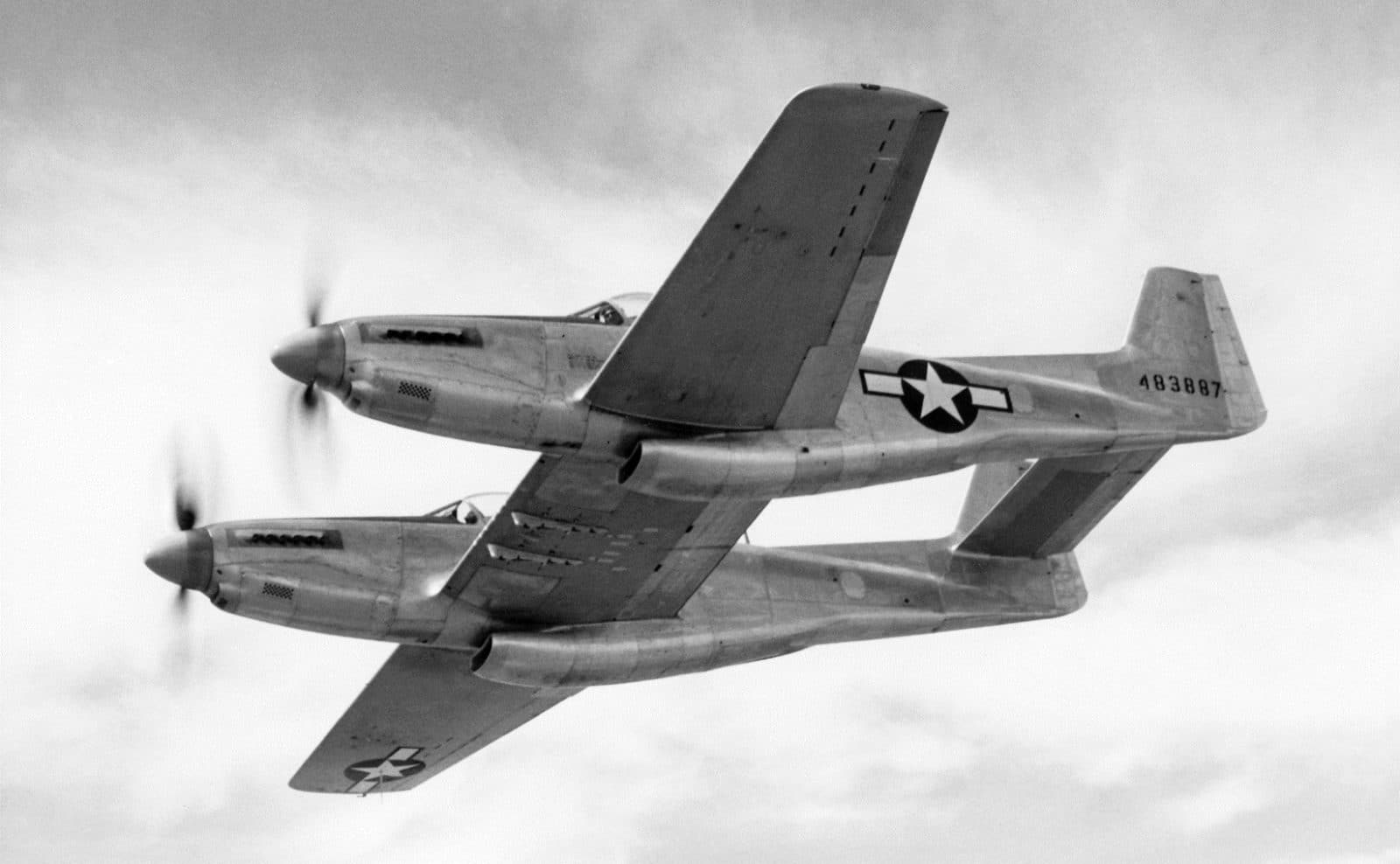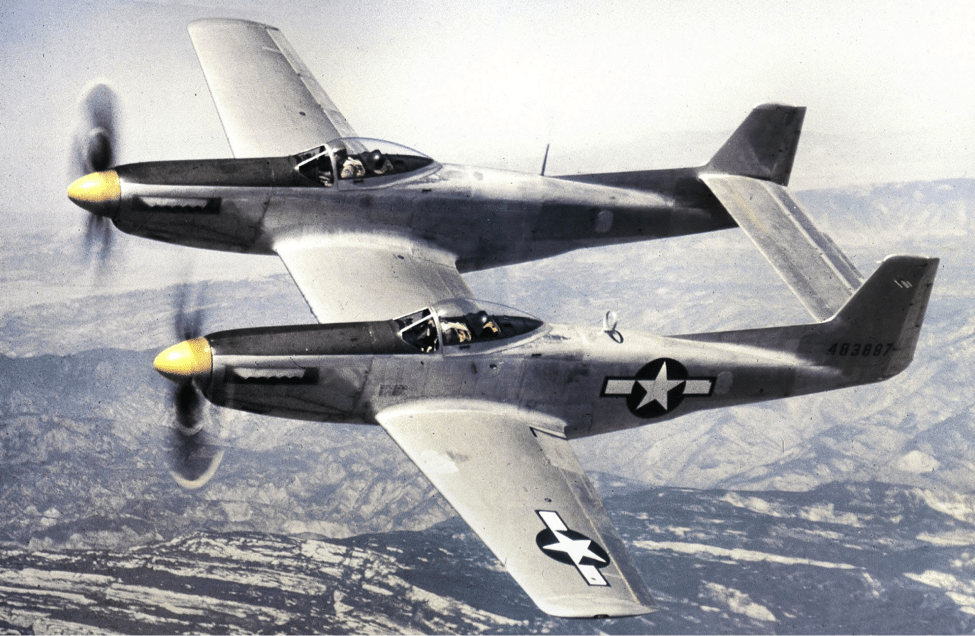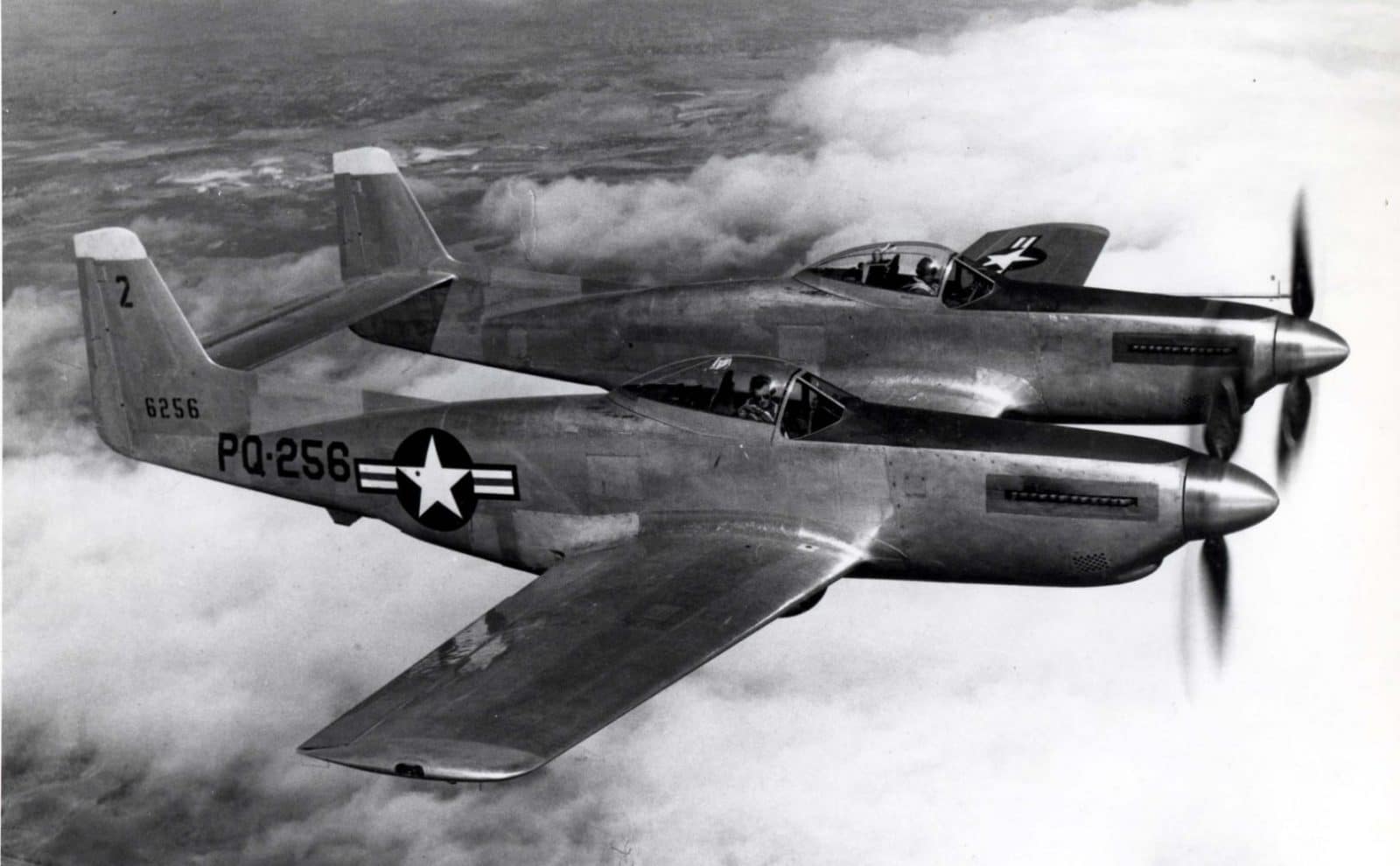No Fuel to Spare, But They Eeked Out a Record That Still Stands.
On 27 February 1947, Colonel Robert E. Thacker (pilot) and Lieutenant John M. Ard (copilot) took off from Hickam Field on Oahu, Hawaii and headed east. Their aircraft, Betty Joe, a P-82B Twin Mustang Air Force serial number 44-65168, landed 14 hours, 31 minutes, and 50 seconds later at La Guardia Field in New York. The flight covered 5,051 miles (8,129 kilometers) and averaged 347.5 miles (559.2 kilometers) per hour.

About That Still-Standing Record
Betty Joe did not stop. Betty Joe did not refuel. Betty Joe took off with a total of 1,816 gallons of fuel and used nearly every drop of it to complete the flight. Thacker and Ard’s flight is still the longest non-stop flight by a piston engine fighter and the fastest flight from Hawaii to New York by a piston engine aircraft. The flight might have been completed in even less time had the pilot jettisoned his empty drop tanks after he drained them as planned!

Genesis of the Twin Mustang
Looking like nothing so much as a pair of P-51H Mustangs joined at the hip or some Photoshopped apparition, the P-82 was originally developed during World War II to fulfill the need for a very long-range escort fighter for B-29s that would be raiding Japan. The design had just barely gotten off the ground when the war ended. The prototype was completed on 25 May 1945. The first flight of the XP-82 was on 26 June 1945.

The Rare Merlin-Powered Twin Mustang
Oddly enough, initial production P-82s were powered by the Mustang’s Rolls Royce Merlin engine but the remaining production aircraft were all powered by the lower-horsepower Allison V-1710. The Merlin-powered Twin Mustangs eventually became trainers, which meant that P-82 trainers were faster and performed better at altitude than the subsequent Allison-powered production aircraft.

Deadheading and Scoping the Snoopers
All P-82s became F-82s when the newly-formed United States Air Force changed the P-for-pursuit designation prefix to the F-for-fighter designation prefix on 11 June 1948. Later production aircraft were not equipped with full cockpits and dual controls as the prototype and early variants were. A radar operator occupied the right cockpit in radar-equipped F-82s.

Into Service with SAC First
The F-82E was the first F-82 model to reach operational status in March of 1948, with Strategic Air Command’s 27th Fighter Wing at Kearney Air Force Base in Nebraska. With range and performance that would allow them to escort bombers attacking Russia all the way to the target and back the 27th FW deployed to support air defense and long-range escort missions envisioned due to tensions around the Berlin Airlift. In early 1949, the 27th FW began flying long-range escort mission profiles. Missions from Kearney AFB to Mexico, the Bahamas, Puerto Rico, and nonstop to Washington D.C were all flown.

